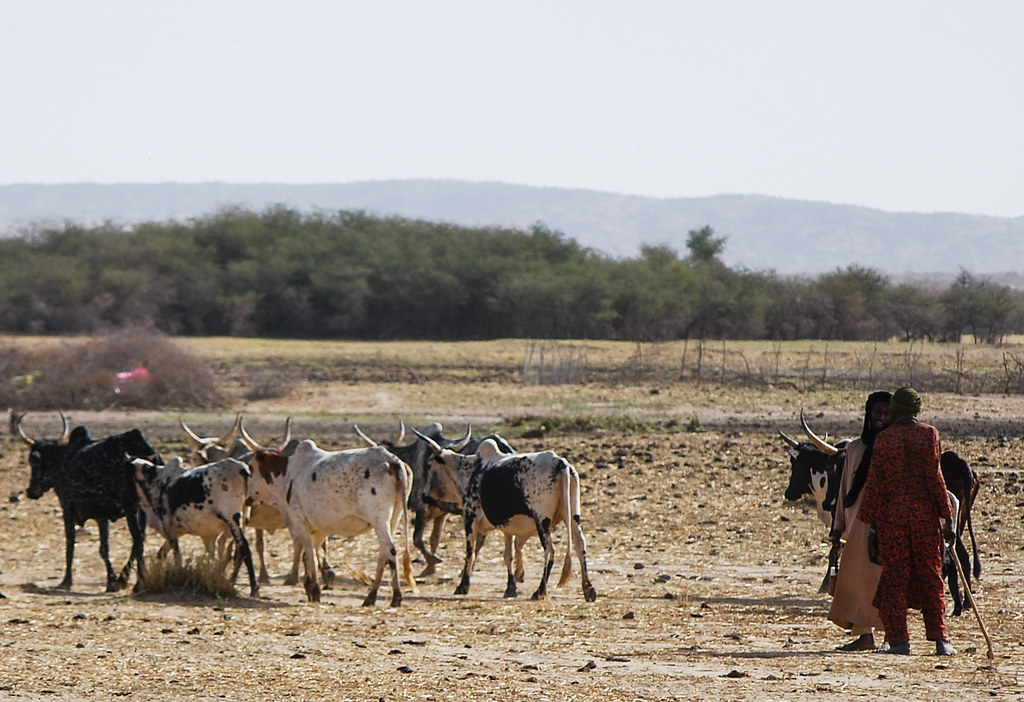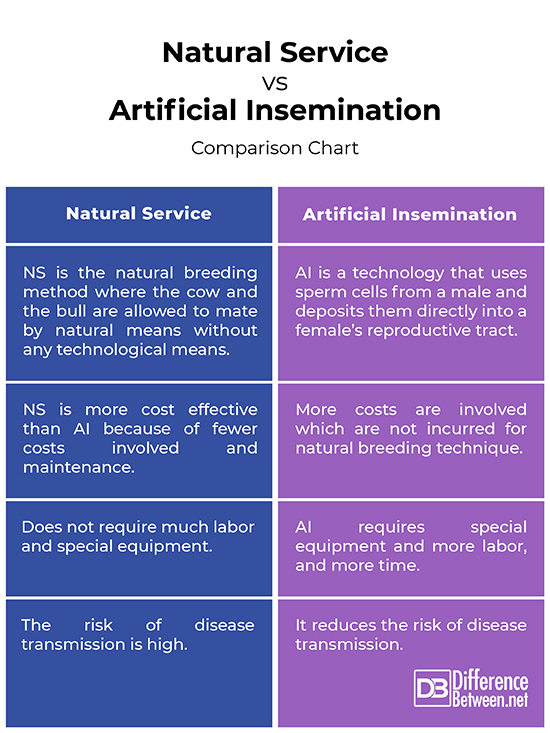Difference Between Natural Service and Artificial Insemination

What is Natural Services?
Since the beginning, as humans we have been largely dependent on the nature’s resources for our wellbeing and survival. These ecosystem services have a significant role building and maintaining human prosperity. We depend on natural ecosystems, such as wetlands, forests, grasslands, and mountains for almost everything. These natural ecosystems are the result of interactions between living organisms and the nature. Firstly, all our food, water, fiber and fuel, the unseen regulation of the climate, the air we breathe, flood and disease control, and the pleasure of the great outdoors – the benefits of nature and its role in social cohesion is simply unparalleled. All these services we get from nature and natural ecosystems for free are collectively refer to as natural services. Without these natural services human life wouldn’t be possible.
What is natural service in cattle?
Natural service (NS) is one of the two commonly used methods to get cows in calf and a critical component of a good reproductive management on the farm. Reproductive efficiency plays a crucial role in the economic viability of the dairy industry. NS remains the predominant practice for most cattle breeders and cow-calf producers. It’s the natural breeding process wherein the bull and the cow are allowed to mate as they naturally show heat. This is the mating of cattle by natural means.

What is Artificial Insemination?
Often cattle breeders use reproductive technologies such as artificial insemination (AI) and estrous synchronization, which are the most important and common breeding techniques used in the dairy industry these days. AI is an Assisted Reproductive Technology (ART) used to collect sperm cells from a male and deposit them directly into a female’s reproductive tract. It is the most preferred option among cattle breeders which often result in improved reproductive performance, calf performance and herd genetics. AI used in animals all the way from a tiny honey bee to a giant elephant, and even humans. AI has had a major impact on livestock improvement programs in developed nations.
Why is AI better than natural breeding?
There are several reasons why producers have adopted artificial insemination technique in cattle reproduction. For one, this technique accounts for the genetic improvement of farm animals. In addition, AI technology speeds up genetic progress, reduce the risk of disease transmission, improve reproductive performance and expand the number of offspring that can be bred from a superior parent. Without a doubt, AI has been the most important and commonly used reproductive technology applied since the 20th century to cattle. The use of AI also reduces the need for cleanup breeding.
Is AI more profitable than natural breeding?
It is a common perception that the use of natural service sires is a cost effective method for reproduction because for one, it is easier to manage and requires less labor, hence the reduced cost of maintenance. However, AI is not only a novel method that brings about impregnation in females, but also a powerful reproduction technique used for livestock improvement. There are obvious costs associated with implementing the AI technique which are not accounted for natural breeding, such as labor, pharmaceuticals, semen, and technician charges. However, AI reduces the number of bulls needed to breed females.
Difference between Natural Service and Artificial Insemination
Method of Natural Service and Artificial Insemination
– Natural service (NS) and artificial insemination (AI) are two widely popular breeding programs adopted by cattle breeders and dairy producers throughout the world to improve reproductive performance in dairy cows. NS, as the name suggests, is the natural breeding method where the cow and the bull are allowed to mate by natural means without any use of technology. AI, on the other hand, is an Assisted Reproductive Technology (ART) used to collect sperm cells from a male and deposit them directly into a female’s reproductive tract.
Cost of Natural Service and Artificial Insemination
– The costs associated with using the AI method is higher compared to the natural breeding program. Although, AI technique has been used in many countries as a tool for controlled breeding, there are costs involved which are not incurred for natural breeding technique, such as labor, pharmaceuticals, semen, and technician charges. It’s an artificial method for impregnating females with the help of instruments, which require special equipment and well-trained operators and more time. So, all the equipment and labor account for more costs.
Benefits of Natural Service and Artificial Insemination
– Natural breeding may be more cost effective than AI for cattle reproduction, AI has more benefits that make it the common choice among cattle breeders and calf producers. AI has had a major impact on livestock improvement programs in developed nations. It often results in improved reproductive performance, calf performance and herd genetics. In addition, it speeds up genetic progress, reduces the risk of disease transmission, and expands the number of offspring that can be bred from a superior parent.
Natural Service vs. Artificial Insemination: Comparison Chart

Summary
While both NS and AI are the two most important breeding programs used by cattle breeders and calf producers around the world, AI has proved to a more beneficial tool for controlled breeding. In fact, in many developed nations, AI has made a real impact on livestock production. Natural service is undoubtedly the most important component of a good reproductive management on the farm, which has its own advantaged. But the developments in the field of breeding and reproduction, such as artificial insemination have had a significant impact on livestock improvement programs. And AI has several benefits over natural breeding, such as improved reproduction performance, reduced risk of disease transmission, and accelerated genetic progress.
- Difference Between Caucus and Primary - June 18, 2024
- Difference Between PPO and POS - May 30, 2024
- Difference Between RFID and NFC - May 28, 2024
Search DifferenceBetween.net :
Leave a Response
References :
[0]Gordon, Ian. Reproductive Technologies in Farm Animals, 2nd Edition. Oxfordshire, England: CABI, 2017. Print
[1]Presicce, Giorgio. Reproductive Technologies in Animals. Massachusetts, United States: Academic Press, 2020. Print
[2]Daily C. Gretchen. Nature's Services: Societal Dependence On Natural Ecosystems. Washington, D.C., United States: Island Press, 2012. Print
[3]“Natural Service Vs. Timed AI.” The Dairy Site, Global Ag Media, thedairysite.com/articles/2548/natural-service-vs-timed-ai/. Accessed 3 June 2021.
[4]Image credit: https://live.staticflickr.com/4354/35898275183_51cc70a407_b.jpg
[5]Image credit: https://live.staticflickr.com/7043/6909940145_7fb5207c7e_b.jpg
